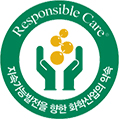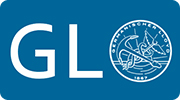SUSTAINABILITY
Environmental / Safety
Management
Environmental/Safety Policies
Kumho P&B Chemical Co., Ltd. shall endeavor to faithfully perform the following in order to realize a disaster-free and disease-free workplace through continuous improvement of safety/health.
1. Safety/health is given priority at all stages of product development/design/production/transport/service.
2. Establish safety and health goals and implement appropriate resources and continuous improvement activities to achieve them.
3. Efforts shall be made to develop and introduce technologies to provide a safe working environment and to enhance the health of workers.
4. All regulations and other requirements and objectives shall be documented, delivered to all executives and employees, and education and training shall be conducted to ensure continuous compliance.
5. Actively communicate and respond to the safety and health concerns of the employees, customers, local communities, and related organizations.
6. Encourage safe use, transportation and disposal by fully consulting and providing information to the customer about the risks of the product.
7. In order to solve problems related to safety and health and to develop technologies, a cooperative system with all interested parties shall be maintained, and environmental, safety and health programs shall be implemented jointly with partners.
8. The company and all its partners will do their best to create disaster-free and accident-free workplaces and contribute to the 'ZERO' occurence of accidents through mutual trust, respect and cooperation.
9. In order to achieve the policy, the head of the environmental safety team shall be designated as the manager's agent and the participation of all executives and employees shall be promoted through regular review and audit.
10. Strictly complies with the 12 tasks of process safety management.
Detailed objectives

-
safety and health
thorough trainingㆍSafety and Health education for
Visitors
ㆍSafety and Health education for
consultative parties
ㆍSafety and Health education by
works -
Workshop Safety Measures
and check-upㆍProviding & managing Safety gear
ㆍManagement of partner's
safety management expenses
ㆍManagment of Workers' special
health check-ups
ㆍChemicals risk assessment
measures, etc. -
wearing protective gear
and health managementㆍManagement of issuance of safety
work permit
ㆍPre-operation inspection management
ㆍChecking process operation
procedures
ㆍUpdate process safety data, etc -
Thorough Implementation
of PSMㆍEstablish a safety measures plan
before working
ㆍChecking worksite safety measures
ㆍAttendance check during works
ㆍChecking results of the post-operation
safety measures














